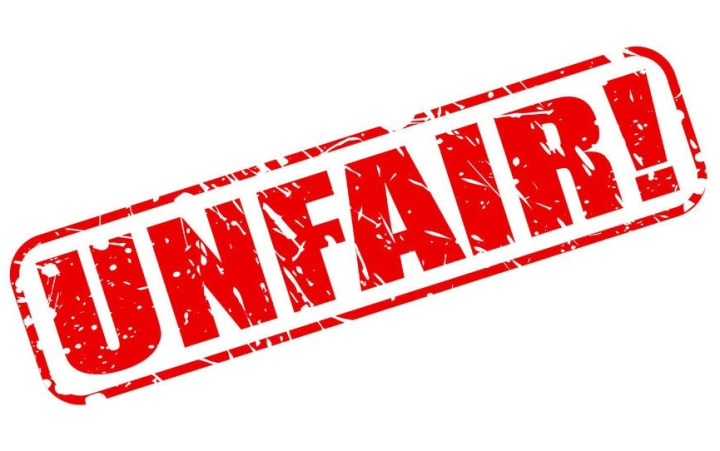Stock Trading – Entry 6
How Cryptocurrency trading Could Have Worked for Me, but Didn’t the First Time

For now, let’s let the three stock trades I just made using $360 do their thing and sock away a little more to throw into the mix. This article is about one of the earlier steps I have taken towards building my financial wealth. It was in blockchain, also known as cryptocurrencies. (Crypto means hidden.)
What you will find in this article is an overview from a potential simple investor’s point-of-view of what blockchain is and three big mistakes to avoid – one of which I didn’t, so I can then show you how and why I intend to invest in blockchains in the future.
To start, imagine a ticket to an event where, if you don’t have a ticket, you absolutely cannot gain entry. The number of seats are limited to 10,000 – so only 10,000 tickets are printed. Tickets are issued to some people verified by the issuer and tickets never get replaced no matter what. If you obtain one of those 10,000 tickets and don’t want to attend, it’s ok to sell the ticket. You find a buyer and arrange the sale, but the holders of at least 5,001 (half plus one) of other tickets MUST witness the transaction in order for the bouncer at the door to accept the buyer of your ticket as the new ticketholder. Same thing if that new person wants to sell it to someone else. Blockchain transactions work in a similar way.
One of the simplest examples of blockchain has been tokens with a feature associated with it, such as an ID for a specific product (e.g. a specific pair of jeans). These blockchains are not currencies, but wow is security tight and everything is VERY verifiable. People who are involved with product inventories that move around regularly LOVE this because some forms of blockchain can serve as a very unique and robust tracking system. Ditto for traffic monitoring.
But cryptocurrencies aren’t trackable!
Hang on; I have not yet added a slew of other features for such a thing to be a currency. My point and the first thing you need to understand about any blockchain is: how a blockchain is used or can be used matters. In other words, blockchain is all about use cases.
Mistake #1: Not knowing the use case of a blockchain.
For example, some blockchains are simply ways for a company to track the products it makes and ships worldwide. That will not appear for sale on cryptocurrency exchanges because the company will use that blockchain internally for tracking purposes.
Taking another example, some blockchains are used by banks to run experiments on it as a potential real currency. Why would an investor ever buy that? Not to be experimented on, but because the investor believes they can either penny trade against the bank (as if) or because they believe that blockchain will be used like a currency at that bank. If it is anticipated to be used as a real currency, other people will want it and that demand will increase the value of the blockchain, so an investor can make gains that way. Buy low at the experimental stage and sell high when everybody else adopts it (jumps on board). That’s the longer buy-and-hold strategy and why it is so easy to find stories saying people are adopting en masse AND people have stopped adopting en masse. It’s the only useful news to blockchain investors because it’s a universal trigger point for them, said Pavlov after training his dogs.
The majority of those currency-esque blockchains are very close to what you could call a currency. That’s what all the hype is about. People look at it as the next medium of exchange (what you use to buy stuff), so it can be traded and speculated like regular currencies. How do blockchains rise above regular currencies in comparison? A couple of ways.
One really juicy carrot that investors love about all blockchains (that I am familiar with at the time of writing this article): no one can manipulate the quantity in circulation after issuance. Unlike printing money, blockchain quantities are fixed.
Inflation is a guaranteed 0%. Forever!
That means the cost of buying a blockchain (either with real money or a different blockchain) is the actual perceived worth of it on the market. So it’s all about perception, no central bank manipulation of prime rates (yet). How, then, are use cases publicized to align and provide the initial foundation for that perception? In simpler words, how do you know what you are actually buying?
There are exchanges where you can buy and sell publicly available blockchains like bitcoin, etherium, litecoin, dodge, etc. Are blockchain exchanges regulated in your country? If not, whose rules would you be playing by when buying and selling blockchains – assuming any rules would apply?
I searched and found that Netcoins, a blockchain exchange in Canada, had become mildly regulated. The Canadian government had made the sign-up process interesting with a lot of extra questions and declarations. Clearly, the Canadian government seemed to want to be in a position so that the governance infrastructure would be largely in place should they ever want to flip the switch. To what? To make policy and legal changes at the stroke of a pen and view any blockchain as a currency. With the infrastructure already in place, taxation could commence before the ink of the newly printed policy could dry. At the time of writing this article, blockchains were not legally defined as legal tender (a currency) in Canada.
Tax-free, inflation-free, an exchange with some regulation, blockchains with currency-like use cases, and a $25 welcome bonus (if you use this link to Netcoins). The next question was, could I afford it? Did I need $360? Yes to the first and no to the second.
Unlike regular currencies that are limited to trading to the nearest penny before you can cash out, blockchains can be traded in much smaller sub-units. I can buy bitcoin right now with $1, but it will be a tiny fraction of a bitcoin, not a whole bitcoin that is worth tens of thousands of dollars (at the time of writing this article).
Another drawback to trading with regular currencies is needing to “buy on margin” if you don’t have enough money to buy the quantity of shares or another currency that you want (e.g. you want to buy a stock for a $1 but only have ten cents so you get the other ninety cents on margin (through borrowing)). With blockchains, you can trade tiny fractions of one unit, so there is no need to buy on margin. You can use your own funds right from the get-go without the risk of going up sh*t creek (if the “margin is called”, forcing you to pay the remainder when you lose money on a trade).
This put trading in blockchains within my price range.
Mistake #2: When blockchains leave your digital wallet, they stop being yours.
No insured bank vaults exist for blockchains that I am aware of at the time of writing this article, let alone back then. That meant I needed to be vigilant about my digital wallet where any blockchains I purchased (in exchange for regular money or other blockchains) were kept. It’s just like keeping something valuable under a mattress or behind a painting (without the safe).
How did I intend to make money? The only way I knew how was to take penny trading principles for stocks and apply them to blockchains, which does work and a lot better. To get any significant gains, however, you need to trade a lot. Software was the way to go and I had two options:
- Spend thousands of (real) dollars on software I would then use; or
- Have someone else manage it for me (kind of like a super-hyper-active mutual fund)
You guessed it. I transferred the bitcoins to someone else’s wallet to be managed. I never saw those blockchains again, to the tune of over $4,500.

Me no happy. While there are agencies that will track down international blockchain scammers, it would have cost me $3,000 and the chance of getting the entire amount back (in any currency) was less than 100%. Money gone.
Many sites and exchanges say not to invest more than you are willing to lose when trading in blockchains. The same can be said of the regular stock market, which is regulated and stable enough to spot these kinds of problems and evade many of them, but not what I am about to write next.
Even if I had somehow managed to navigate use cases (not the easiest reading), even if I had kept the blockchains in my own digital wallet, I would still have had to deal with one of the other main reasons why trading in blockchain now (2023) is considered to be like the wild west.
Mistake #3: It is very easy to leave yourself open to pump and dump schemes, which abound.
You can actually find webpages from time to time that encourage people to sign up and coordinate as a group to do this. Coordination is key because those pump-and-dumpers will be using their own individual digital wallets to buy and sell. Here are the basic steps they follow:
- Set a date and time for a pre-determined group of investors to buy a boatload of a particular blockchain at a particular time at whatever the price is then, say $1.
- This drives up demand, which drives up perception, which drives up the price (first/fake pump), say $2.
- People outside that group see the price rise and want to ride the wave, too, so they buy, which drives the price up even more (second/real pump), say $3.
- At this point, the pump-and-dump gang sell like crazy (dump) and walk away with more money than when they started (second pump (step 3) minus the first pump (step 2)).
- The people who invested at step 3 end up with blockchains valued much less than when they started (compare the price at step 3 with the one at step 2, step 1, or even less)!
Remember when I mentioned earlier that the setup of currency-like blockchains is to buy low at the experimental stage and sell high when everybody else adopts it (jumps on board)? Pump-and-dumpers create fake demand that is perceived by the market as real demand. This is a supposedly clear sign of people jumping on board, so other people buy more. The pump-and-dumpers profit, not from the perceived demand that they create, but the additional demand that comes immediately after theirs.
They create a sizeable wave and profit off of the wave that comes because of their wave so they can buy low and sell high. That’s ok isn’t it?

Kinda screws the other people who interpreted the fake stuff as genuine market activity.
Does that happen all the time? No. Does that happen with every single blockchain out there? Don’t be naive. There are two ways around this, however (which is why I didn’t pump and dump).
How laws can be so articulate with fraud but not this kind of fraudulent perception is something I still find…interesting. It shouldn’t be that difficult for legal professionals to invent a new legal term for this kind of thing and apply it to currency-like blockchains, motivation is lacking so long as blockchains are not (yet) legal tender. How would this kind of speculation differ from other goods? Dunno. Somebody else please figure that out – that is one way around pump-and-dump schemes.
In my next article, I will mention what all of this taught me about investing in blockchains, how I intend to invest in them while avoiding these problems, and the second way around pump-and-dump schemes. So read on.
About the Creator
Richard Soulliere
Bursting with ideas, honing them to peek your interest.
Enjoyes blending non-fiction into whatever I am writing.






Comments
There are no comments for this story
Be the first to respond and start the conversation.